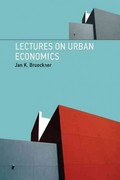Question
Two-part Tariff A bar produces a good (think of it like beer and all other related services) with a constant marginal cost of $5 per
Two-part Tariff A bar produces a good (think of it like beer and all other related
services) with a constant marginal cost of $5 per unit. Assume for now that all
consumers have the same demand Q = 10 P and there are 100 students.
a) Suppose that the bar cannot price discriminate and has to charge the same price P for the good. Calculate the price that maximizes profits and the number of profits.
b) Suppose now that the bar can charge a two-part tariff (T, P), where T is the cover (entrance fee) and P is the price per unit, i.e. a student that goes in the bar spends T + P Q. Calculate the two-part tariff that maximizes profits and the number of profits. Why are P and P different?
c) Assume now instead of that there are two types of students. Type 1 students have
demand Q1 = 10 P and type 2 students have demand Q2 = 10 P 2. The population is still 100 and there are 50 of each type. Calculate the two-part tariff that maximizes the
profits of the monopolist. Why is the pricing arrangement different from the one you
have calculated in b)?
Step by Step Solution
There are 3 Steps involved in it
Step: 1

Get Instant Access to Expert-Tailored Solutions
See step-by-step solutions with expert insights and AI powered tools for academic success
Step: 2

Step: 3

Ace Your Homework with AI
Get the answers you need in no time with our AI-driven, step-by-step assistance
Get Started


